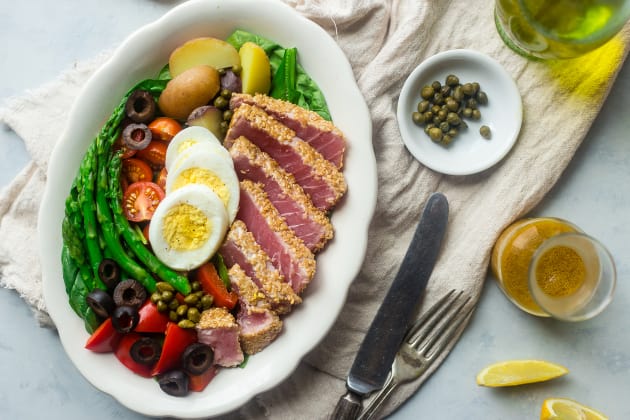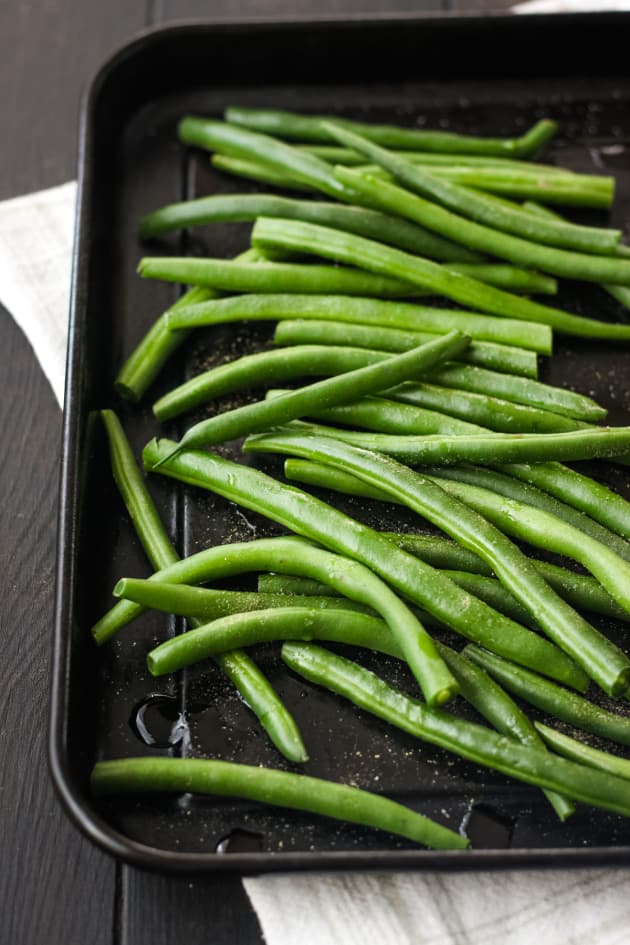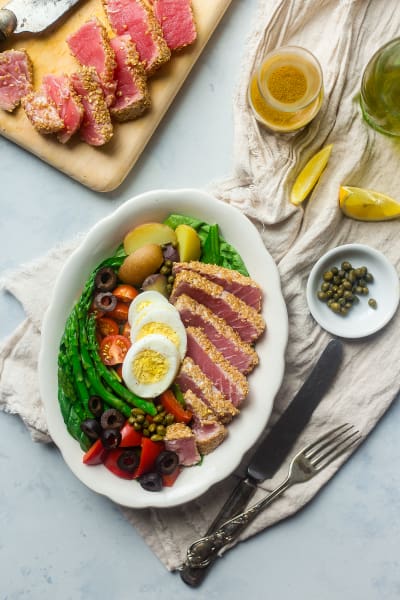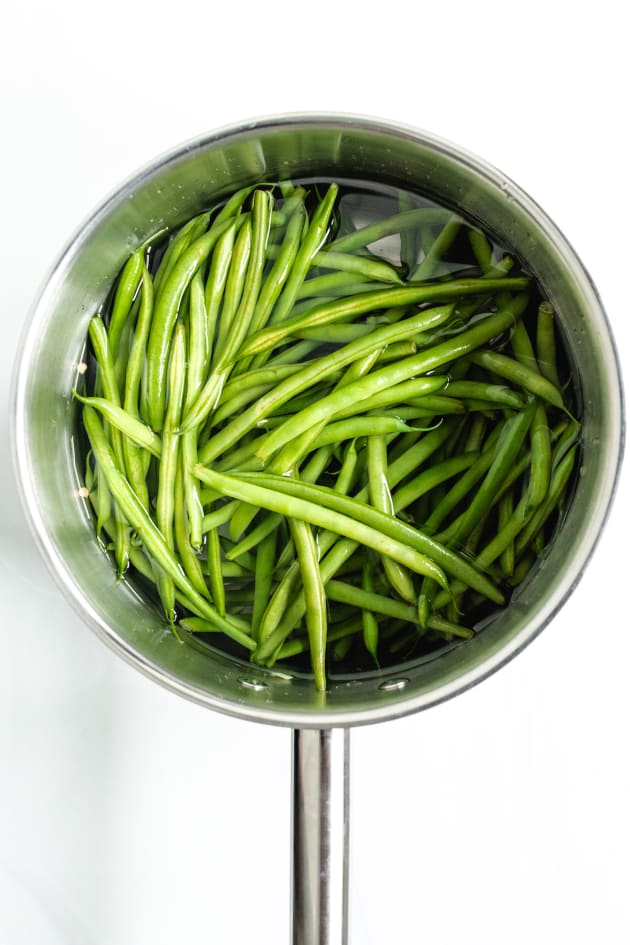How to Blanch Vegetables
Melissa BahenLearn why and how to blanch vegetables and how blanching works, plus find out which vegetables are the very best to blanch.
Sometimes, a recipe requires a vegetable that has both the vibrant color and firm texture of a fresh veggie without the starchiness of a completely raw veggie.
How do you get that mix of characteristics in a vegetable all at the same time?
By using a fast and easy food prep technique called blanching!
What is Blanching?
Blanching is one of our favorite cooking methods and a simple technique involving a 2 step process:
- Put your fresh vegetables in boiling water for a very short time (less than a minute!)
- Plunge the veggies straight from the blanching water into an ice bath (a simple bowl of ice water) until the food has cooled off.
- Remove the vegetables from the cold water and continue preparing as intended.
Blanching works because the high heat of boiling stops the enzyme activity that leads to fresh produce losing color, texture, and flavor quality over time, and the ice bath puts a quick stop to the cooking process.
Why Blanch Vegetables?
There are a number of instances in which blanching vegetables is useful. (In fact, it's kind of one of our favorite things.)
Blanching is often used to briefly cook a vegetable while retaining its texture and vibrant color. Often those vegetables aren’t meant to be eaten hot, but they also aren’t very good raw. Blanching is the perfect compromise!
Let’s look at the green beans in Niçoise Salad, for example. Niçoise Salad is served cold, but cold, raw green beans and asparagus are very starchy and hard to eat.
At the same time, green beans or asparagus that have been cooked completely and then cooled down are usually shriveled and limp, and have lost that beautiful, bright green color that fresh green veggies have.
Blanching the green beans or asparagus actually makes their color even brighter, and gives them a firm yet tender texture–a pleasant bite without the starchiness.
The resulting tender-crisp vegetables are delicious on crudité platters or added to stir fries with no loss of flavor.
Blanching is also a great way to loosen the peel on fruits and vegetables with thin skins. Think peaches or tomatoes.
If you want to peel peaches or tomatoes before canning them, cooking with them, or even eating them fresh, blanching loosens the skin without cooking the produce. The peels literally slide right off!
One more circumstance in which blanching comes in handy is when you want to freeze raw vegetables for later cooking.
We grow a lot of green beans and corn in our garden and can’t always eat them as quickly as they ripen.
If we were just to freeze the raw produce without any preparation, they would lose color, flavor, and texture quality over time.
Blanching them first helps preserve all 3 of those characteristics so that they can be cooked later and be at their best.
What Vegetables Are Good for Blanching?
Vegetables that are good for blanching include:
- Green beans and other green vegetables
- Asparagus
- Peas (including snow peas and snap peas)
- Corn (for freezing, cut off the cob)
- Broccoli and broccoli rabe
- Cauliflower
- Carrots
- Tomatoes (for easy peeling)
- Peaches (for easy peeling)
What’s the Difference Between Blanching and Parboiling?
Blanching is often confused with or considered to be the same thing as parboiling. While similar techniques, this assumption isn't entirely accurate.
The intent of blanching is not to cook the vegetables. They may be fully cooked later, but they may be eaten fresh, used in a salad, frozen, etc.
The goal with blanching is to preserve (and even boost!) fresh color, texture, and flavor. With blanching, you only submerge the produce in boiling water for at most a few minutes, usually less.
So, what is parboiling? Parboiling is specifically used to pre-cook something that you will finish cooking later - to get it halfway cooked so that you can fully cook it, often with a different technique.
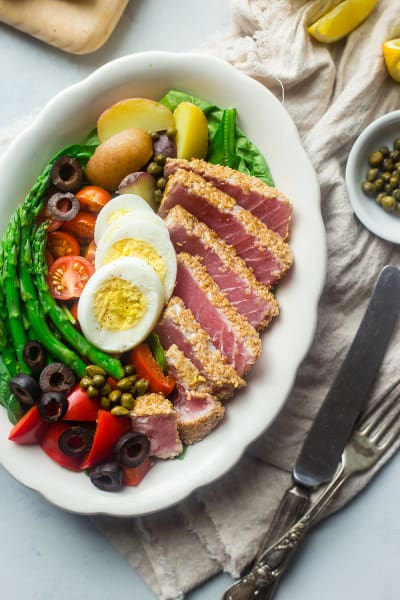
Parboiling often takes a longer amount of time than blanching, depending on what is being parboiled, and doesn’t involve shocking or rapidly cooling the food.
Parboiling is great for hard, starchy vegetables like potatoes or sweet potatoes that generally take a long time to cook. You can also parboil rice for quick reheating.
Likewise, we love to parboil peppers before stuffing and baking and even meats like sausages and brats before grilling.
How to Blanch Vegetables
Among the handiest basic cooking skills for home cooks to learn, the blanching process is super simple. Here is everything you need to know about how to blanch vegetables:
- Place a large pot of salted water on the stove over high heat and bring it to a rolling boil.
- Fill a large bowl with a mixture of ice and water, and place it on a work surface near the stove.
- Grab a slotted spoon, a small colander, a spider strainer, or some other kitchen utensil that you can use to scoop produce from the pot of boiling water.
- Blanching can be a little wet, so maybe have a small stack of kitchen towels or a roll of paper towels on standby.
- Place your fresh veggies (whatever type of vegetable you're working with) in the boiling water without splashing hot water all over yourself or the kitchen, and set a timer based on what you’re blanching. If you are following a recipe or canning/freezing instructions, it should include the blanching time.
- When the timer goes off after a short amount of time, turn off the heat, scoop the produce out of the boiling water, and put it directly into the ice water.
- Allow the produce to sit in the ice water until it has cooled to room temperature, then drain it and use it.
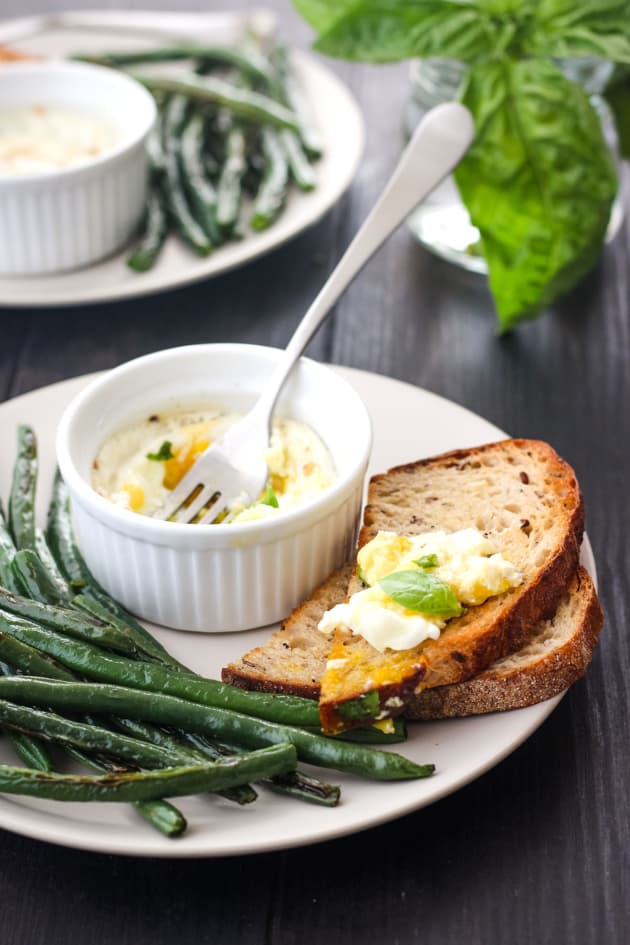
How to Use Blanched Vegetables
Once you've removed your blanched veggies from the ice water bath, the next step is to use your veggies! Here are a few ways we use blanched veggies:
- Vegetables like Brussels sprouts can be blanched before making perfectly roasted Brussels sprouts
- Make our favorite Asian nicoise salad with crisp, blanched asparagus
- Serve colorful crudité alongside our smoked gouda pimento cheese dip
- Blanch vegetables to make this crowd favorite lemony grilled potato salad
Planning a dinner party and need some inspiration?
How about looking for a new slow cooker dinner idea?
We’ve got you covered in our ever-growing Facebook group! If you’re not a member yet, why not?!

We’re chatting cooking techniques, dessert ideas, and everything in between. If you’re already a member, invite your friends to join us too!


